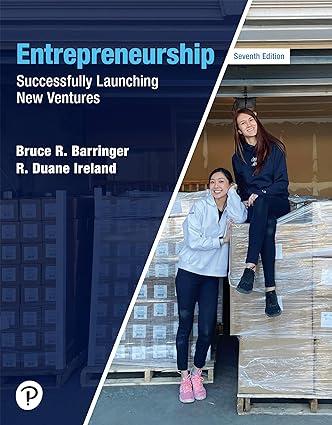In 1991, Geoffrey A. Moore, a lecturer and management consultant, wrote an influential book titled Crossing the
Question:
In 1991, Geoffrey A. Moore, a lecturer and management consultant, wrote an influential book titled Crossing the Chasm. The book became an instant must-read for managers, entrepreneurs, and investors. Updates to the book appeared in 2009 and again in 2014. Some describe the book as the bible for understanding why some technology oriented startups grow into large firms while others stall or languish in terms of adoption and firm growth. The book’s premise is that there is a chasm between the early adopters of a product (the technology enthusiasts and visionaries) and the early majority (the pragmatists). The key insight is that to cross the chasm, firms must first dominate a niche of early adopters and expand from a position of strength. The technology adoption life cycle is the basis for the concept. The stages in the technology adoption life cycle are innovators, early adopters, early majority, late majority, and laggards. Startup products appeal initially to “innovators,” people who like to try new things but are seldom willing to spend much. Then come the early adopters, or visionaries, who are willing to take a chance on a new product if it solves a burning problem for them. The largest segment, the early majority, follows the early adopters. The early majority will only buy if a product is complete and receives strong recommendations from others. Without recommendations the early majority will not buy, regardless of how well a product suits their needs. Next is the late majority, which buys only after a product has become the standard. The laggards, the last part of the technology adoption life cycle, rarely buy. The chasm is hard to cross. Ironically, it is not the early adopters who convince the early majority to buy. In fact, the early majority typically mistrusts visionaries’ enthusiasm. They start buying once the product earns credibility and momentum within their own group and begins to build as a result. In his book, Moore suggests techniques to appeal to the early majority and cross the chasm, including issues pertaining to a firm’s target market, its positioning strategy, its marketing strategy, and a number of other important factors. It is well worth the time to read the book to learn the techniques and capture the subtleties....
Discussion Questions:
1. Select at least two other firms that you believe have crossed the chasm. Briefly summarize how the firms rolled out their products and what you believe were the key steps that resulted in crossing the chasm successfully.
2. In contrast to question #1, list at least two startups with which you are familiar that produced products that you believe never crossed the chasm. Briefly describe the reasons for these failures.
3. Do you believe consumer products cross the chasm (or fail to) much like technology products?
In terms of adopting technology products, do you see yourself as an early adopter or as part of the early majority? How does your answer affect the pattern you follow to purchase technology products?
Step by Step Answer:

Entrepreneurship Successfully Launching New Ventures
ISBN: 9780138091828
7th Edition
Authors: Bruce R. Barringer, R Duane Ireland





